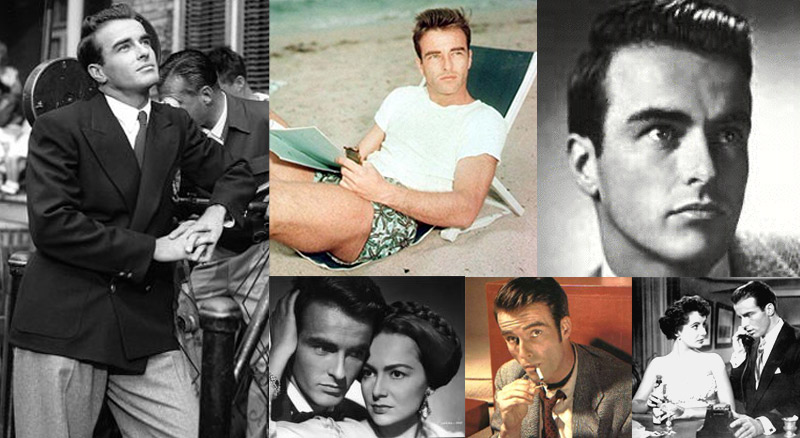
You can translate this blog using Google translator widget. And you can always comment in your language, of course!
Yellow texts are in English

montgomery clift
27.9.08
26.9.08
The skin of our teeth.- programa

.jpg)
Title Page with Cast Listing and Credits;
Two page bio. with photo for Miss Bankhead;
Two page bio. with photos for Mr. March;
Two page bio. with photos for Miss Eldridge;
Center spread with several production photos;
Two page bio. with photos for Miss Reed;
Two page "The Skin of our Teeth" article with production photos;
Full page "The Critics" with press reviews and quotes;
This Wonderful 16 page Original 1942 Souvenir Program is complete and in good condition (two tape marks on front cover and small stains on back cover).
.jpg)
25.9.08
Dame Nature
Durante el descanso, Laurence Langner, fundador del Theatre Guild, acudió apresuradamente a Times Square para ver lo rotulares del ataque. Él mismo diría:
"Nuestra pequeña comedia francesa languidecía ante nuestos ojos".
Ciertamente el argumento era de lo más trivial: las vicisitudes de unos muchachos de 15 años ante la llegada de un hijo. Las críticas tampoco sirvieron de ayuda.
Posición en TopWip
A fecha de hoy, Montgomery Clift ocupa las siguientes posiciones:
* nº 4.748 (de un total de 35.572 personajes) en el ránking mundial, con 751.185 referencias. Ver web.
* nº 431 (de un total 2.700 personajes) en la lista de actores (sólo hombres), con 641.335 referencias. Ver web.
En la misma web hay un gráfico con las referencias en los últimos meses, no me deja copiar el código html, así que pondré el enlace de la web.
18.9.08
Retrato (9)
 En esta postal aparece un retrato imaginario de Monty inspirado en su papel de Robert E. Lee Prewitt de From here to eternity (De aquí a la eternidad, 1953). Aparece con una camisa hawaiana como en la película y como era el actor en realidad o las que eran sus costumbres de beber y fumar.
En esta postal aparece un retrato imaginario de Monty inspirado en su papel de Robert E. Lee Prewitt de From here to eternity (De aquí a la eternidad, 1953). Aparece con una camisa hawaiana como en la película y como era el actor en realidad o las que eran sus costumbres de beber y fumar.Movie Life.- reportajes (1949)



1 y 2: marzo 1949 - 3: junio 1949
en el primer reportaje se ven fotos muy, pero que muy poco conocidas de Montgomery Clift. el reportaje se titula "El señor en su apartamento amueblado" pero bien podría titularse "Ún día en la vida de la estrella", pues vemos a un jovencísimo y sonriente Monty en sus inicios hollywoodienses (llevaba estrenadas en 1948 Red River y The Search - The heiress en octubre de ese año- y estaba en conversaciones para rodar place in the sun). aparece recién levantado leyendo la prensa, preparándose el desayuno, afeitándose y posando con su coche.
la tercera foto, aunque sale publicada meses después creo que es del mismo reportaje. por la chaqueta y la camiseta blanca y lo que parece que es la portezuela del coche.
¿no os parece que estaba very cute?!!.
16.9.08
Red River (1948).- Rodaje
Pero vaciló al leer el guión, pues temía no estar a la altura de la imponente presencia cinematográfica de Wayne. No se veía como vaquero y menos peleando con él. Pero Hawks le dijo "Eres actor, ¿no?". Aquello le animó bastante. Su antiguo agente Leland Hayward, Kay Brown, un amigo que también era el representante de David O'Selznick en Nueva York y sus padres, le animaron a hacer la película.
El guión de Río Rojo, un relato disimulado de la saga del rancho King de Texas, fue escrito por Borden Chase y Charles Schnee
14.9.08
¡Qué modernos!
10.9.08
Red River (1948).- Ficha
Año: 1946 (distribuida en 1948)
Director: Howard Hawks
Guión adaptado: Bordon Chase y Charles Schnee
Guión original: relato "The Chisholm Trail" de Borden Chase, publicado en el The Saturday Evening Post, de Borden Chase
Música original y canción "Settle Down": Dimitri Tiomkin.
Fotografía: Russell Harlan
Montaje: Christian Nyby
Dirección artística: John Datu Arensma
Sonido: Richard DeWeese
Maquillaje: Lee Greensway
Efectos especiales: Donald Steward
Efectos fotográficos especiales: Allan Thompson
Grabación musical: Vinton Vernon.
Productor: Howard Hawks
Charles K. Feldman Group (no acreditado)
Monterey Productions
Direccón de producción: Norman Cook
Codirector: Arthur Rosson
Ayudante de dirección: William McGarry.
País: EE.UU.
Distribuida por: United Artists
Duración: 126 minutos
Género: Western
Blanco y Negro
Rodada en Rain Vally, Arizona.
Otras localizaciones: Elgin (Arizona), Lil' Boquillas Ranch, Fairbank (Arizona), Nogales, Sonora (México), San Pedro River (Arizona), The Lot - 1041 N. Formosa Avenue, West Hollywood (studio), Tucson (Arizona), Whetstone Mountains (Arizona).
Estreno: 30 de septiembre de 1948
2 Nominaciones a los Oscar
Thomas Dunson ............................... John Wayne
Matthew Garth .............................. Montgomery Clift
Tess Millay ........................................ Joanne Dru
Groot ................................................. Walter Brennan
Fen ................................................... Coleen Gray
Cherry Valance .............................. John Ireland
Buster ............................................. Noah Berry Jr.
Quo ................................................. Chief Yowlachie
Melville ........................................... Harry Carey Sr.
Dan Latimer .................................. Harry Carey Jr.
Matt (niño) .................................... Mickey Kuhn
Teeler ............................................. Paul Fix
Sims ................................................ Hank Worden
Bunk Kenneally............................. Ivan Parry
Old Leather .................................... Hal Taliaferro
Fernández ...................................... Paul Fiero
Wounded Wrangler ....................... Billie Self
Walt Jergens .................................. Ray Hyke
Laredo ............................................. Dan White
coronel ............................................. Lane Chandler
Naylor ............................................. Glenn Strange
chica del salón de baile ................. Shelley Winters
doble de Clift .................................. Richard Farnsworth
Curiosidades:
Texas Longhorn cattle had been nearly extinct as a breed for about 50 years when this film was made. Only a few dozen animals were available. In the herd scenes most of the cattle are Hereford crosses with the precious Longhorns prominently placed in crucial scenes.
Gazapos:
- Anachronisms: The film is set in 1865 yet several Colt Model 1873 Single-Action Army Revolvers are seen which were not available until later.
- Anachronisms: When they are driving the cattle and go to the aid of the wagon train, a communications mast can be seen on the hill in the background of one shot of the five horsemen. The next shot is a closer view of one rider and the mast can be seen even more clearly.
- Factual errors: The film gives 14 August 1865 as the completion of the first cattle drive on the Chisholm Trail. However, the first cattle drive on the Chisholm Trail started and finished in 1867, two years later.
- Crew or equipment visible: An equipment shadow tracks across the wagon as the camera pans from Groot to Dunson during their first night on guard at Red River.
- Continuity: During the cattle stampede, Dunson, Matt and the other cowboys saddle up and try to turn the herd. Process shots of each cowboys are inserted in the scene. Every cowboy is riding the same dummy horse and saddle with a very large Mexican saddlehorn.
- Continuity: Inside the tent, during Tom and Tess's conversation, the lamp hanging between them changes positions and disappears between shots.
- Continuity: Near the end of the film, when Tom walks toward Matt, his shadow changes repeatedly from one shot to another.
- Continuity: When Dunson is standing next to his horse after Mathew Garth takes the herd from him, he clearly has a belt full of cartridges, but later on Mathew confirms to Groot that he took all of Dunson's cartridges.
- Revealing mistakes: Matthew Garth seems to beat Thomas Dunson to the draw in a mock contest orchestrated by Dunston and Groot Nadine. However the gun is already in Garth's right hand in order to fool the audience, as evidenced by the his empty holster as he walks away.
- Continuity: Near the end of the movie, John Wayne is shot. After a fight with Montgomery Clift, Wayne is miraculously well again.
- Continuity: As the men and the herd approach the railroad, the clouds change from scattered to clear, to overcast as they approach the town of Abilene.
- Errors in geography: The trail would not go near any mountains.
- Errors in geography: The "Red River" is flowing the wrong direction. If the herd is crossing from south to north, the water should be flowing from west to east, or from the left side of the screen to the right.
- Errors in geography: The "Red River" is flowing the wrong direction! If the herd is crossing from south to north, the water should be flowing from west to east, or from the left side of the screen to the right.
- Miscellaneous: Dunson's final design for the ranch's brand includes "D" for Dunson, but "M" for Matthew - why not "G" for Garth?
Conexión con otras películas:
Remade as
References
Referenced in
Prima della rivoluzione (1964)
Major Dundee (1965)
- The shot of Dundee wading through the crowd of prisoners in Fort Benlin is taken from this film (a scene with John Wayne's character going through the cowboys).
The Born Losers (1967)
- Hawks' montage at the start of the cattle drive is mimicked in a bar scene with the bikers
The Culpepper Cattle Co. (1972)
"Starsky and Hutch: Pilot (#1.0)" (1975)
- Cannell mentions movie by name, later watches it with the other hitman Zane on TV.
Assault on Precinct 13 (1976)
- The rifle thrown from one character to another in the heat of action. This reference is clarified in a documentary about Carpenter which shows two clips. Carpenter also explains his hero Hawks' influence on his films.
Nuovo cinema Paradiso (1988)
City Slickers (1991)
Sunny Side Up (1994)
The Van (1996)
Vampires (1998)
The Negotiator (1998)
A Decade Under the Influence (2003)
- mentioned in documentary
Thelma & Louise: The Last Journey (2003) (V)
Man yan (2004)
- A DVD vendor recommends the film to his customers in a restaurant.
Film Geek (2005)
- Scotty mentions it
Who the #$&% Is Jackson Pollock? (2006)
- stillframe from movie
Australia (2008)
- The cattle drive plot and specifically the cattle stampede are taken almost verbatim from the Hawks film.
"American Masters: Jerome Robbins: Something to Dance About" (2009)
- Refers to Montgomery Clift going to California to make this, his first film.
Featured in
Bellissima (1951)
The Last Picture Show (1971)
- Footage featuring John Wayne, Montgomery Clift and Tom Tyler.
The Men Who Made the Movies: Howard Hawks (1973) (TV)
The Shootist (1976)
Montgomery Clift (1983)
Precious Images (1986)
The John Wayne Anthology (1991) (TV)
The Man Without a Face (1993)
100 Years at the Movies (1994) (TV)
100 Years of the Hollywood Western (1994) (TV)
"The American Experience: Troublesome Creek: A Midwestern (#7.6)" (1995)
Troublesome Creek: A Midwestern (1995)
The Celluloid Closet (1995)
Music for the Movies: The Hollywood Sound (1995) (TV)
- excerpts scenes from near the film's end to demonstrate the use of Dimitri Tiomkin's score
The Last Picture Show: A Look Back (1999) (V)
Kissing Jessica Stein (2001)
John Wayne Made Me Cry: Our Western Heros (2002) (TV)
"SexTV: Legacy of the Cowboy/Blazing Saddles/Pony Play (#7.5)" (2004)
- Clip from film is used in this episode.
The 78th Annual Academy Awards (2006) (TV)
AFI's 10 Top 10: America's 10 Greatest Films in 10 Classic Genres (2008) (TV)
- This film is #5 on the "Western" list.
Spoofed in
- Walter Brennan's character worries and loses his false teeth in both movies.
The Legacy (1978)
Sinopsis (de la Imdb):
We open in 1851. A wagon train is heading west, but Thomas Dunson (John Wayne) wants to head south with his cow and bull and start a ranch. He argues with the wagon train leader, and Dunson leaves with his friend Groot (Walter Brennan). Dunson's girl Fen (Colleen Gray) wants to go with him, but he insists it will be too hard, and he will send for her. He gives her his mother's bracelet off his own wrist as a token of his love.
Hours later, Dunson and Groot see a lot of smoke, and realize that the wagon train is being burned by Indians. They are too far to do anything to help, so they wait for the attack to reach them. In the night, the Indians attack, and Dunson and Groot fight them off. Dunson kills one Indian in hand-to-hand combat, and realizes afterwards that he is wearing the bracelet. Dunson knows his girl is dead.
The next morning, a dazed boy of about 14 wanders up to them, babbling about burning and killing. After a tense confrontation, they help him come to his senses, and he joins them. They cross the Red River and travel south through Texas, finally finding a spot Dunson feels is perfect. Dunson tells the boy (Matt Garth) and Groot that he will brand his cattle with the Red River D symbol. Matt wants an M added but Dunson says he'll have to earn it.
Fourteen years pass, and Matt is now played by Montgomery Clift. The Civil War has impoverished the South, and although Dunson has the biggest cattle ranch in Texas, he's broke because no one in the South can buy beef. Dunson determines to start the biggest cattle drive in history, over 9,000 head north to Missouri, where people are buying beef. They going will be hard.
About 160 miles out, it's a tense night and coyotes are making the cattle nervous. The men keep as quiet as they can to keep from spooking the cattle, but Bunk, stealing sugar again, knocks over a bunch of pots and pans. A stampede starts. Dan Latimer is killed, one of the grub wagons is destroyed, and about 400 head of cattle are lost. Furious, Dunson wants to whip Bunk, but Bunk refuses and draws. Dunson is about to kill him, but Matt is faster on the draw and shoots to wound. Bunk is sent back home.
The journey grows increasingly tense and sullen. At half-rations because of the loss of the grub wagon, the men are hungry and exhausted. Many want to leave but Dunson holds them to their contract. There's a gun battle. One of the men is killed and Dunson is wounded in the leg. That night, 3 men desert while Dunson is asleep. Dunson sends Cherry after them, and he drives the men as hard as he can, keeping them exhausted so they'll be too tired to sneak off in the night.
A man arrives, half dead with exhaustion and hunger, with a deep rope burn around his neck. He, too, had been part of a cattle drive to Missouri, and they were ambushed and murdered. He only survived because the rope around his neck frayed. He says he's met a scout who tells him the railroad is in Abilene, but again, Dunson asks if the scout saw the railroad himself, and when the man doesn't remember, Dunson says they're heading for Missouri.
After three days, Cherry comes back with two of the deserters; the third he's had to kill. Dunson says he intends to hang the men, but Matt stops him, and when he's about to draw on Matt, Cherry shoots him in the hand. He takes over the cattle drive, telling Dunson he's leaving him behind and that they will head to Abilene. Dunson tells Matt he will come after him and kill him.
From then on, the men are all nervous and jumpy, waiting for Dunson to approach them from behind.
They find a cow dead, with Apache arrows and Matt sends Cherry and Buster (Noah Beery) out ahead to scout.
Buster comes back full of excitement. About 12 miles ahead there's a wagon train with food and coffee and women. Now they take their cattle ahead eagerly, but they soon see the wagon train under Apache attack. They come to the rescue and Matt meets Tess (Joanne Dru). They fall in love as it begins to rain. Soon the rain becomes so hard and heavy that the river may flood and trap them. Matt takes the cattle on, leaving Tess behind.
Dunson meets Tess's wagon train and they talk. She is unable to stop Dunson from going after Matt, even offering her body as a bribe, and even ready to draw on him. At last she asks him to take her with him, explaining how it tore her apart when Matt left. Dunson realizes her words echo his dead love Fen's words, and he agrees.
Arriving in Abilene, Matt and his men discover that the Kansans are eager for beef and the price is high. They are greeted like heroes and Matt pays all his men in cash, taking the rest of the payment in a check made out to Dunson. When Matt goes to his hotel room he finds Tess waiting for him. Dunson is outside town and will come in the morning she says, and they spend the night together.
Dunson tells Matt he will add an M to the brand when they get home.
* Ficha en Imdb.
Disponible en DVD en España.

7.9.08
Biografía de Patricia Bosworth (2).- Contraportada

Patricia Bosworth
A los doce años Montgomery Clift inició una brillante carrera en los escenarios de Broadway. A los treinta se convirtió en uno de los actores más admirados de Hollywood. Era un hombre solitario, orgulloso, sensible y distante. Adorado por millones de personas, respetado por sus compañeros, fue, no obstante, un enigma para todo el mundo.
Era famoso por sus ataques de ira, por sus extravagancias. Su ambigüedad sexual, que le torturó a lo largo de su vida, su inexplicable angustia y una fán autodestructivo que le empujaba a consumir grandes cantidades de píldoras, drogas y alcohol, dieron de él una imagen de personaje atormentado y débil.
Patricia Bosworth, tras llevar a cabo una minuciosa investigación y reunir multitud de testimonios de familiares, amigos y conocidos de Monty -como le solían llamar-, ha realizado una de las más completas y apasionantes biografías de uno de los grandes mitos de Hollywood.
Ultramar Editores, S.A.
Mitos M6
6.9.08
Red River.- Filmsite
(English text)
 s where the railroad had been extended (the same trail and market railhead that Cherry had already eluded to).
s where the railroad had been extended (the same trail and market railhead that Cherry had already eluded to).5.9.08
Lonelyhearts.- LP Promo
Record Size: 12"
Duration: LP

Based on MISS LONELYHEARTS by Nathaniel West. Arnold Michaels is the interviewer, and he talks to Robert Ryan, Myrna Loy, Dolores Hart, Maureen Stapleton and others...and...hold your breath and flip to side two...he does talk to the reclusive, dangerous, dynamic and always controversial MONTGOMERY CLIFT. The interviewer wonders why the advance publicity has been so strange, and why Monty has such a terrible reputation...and he GETS THE ANSWERS, in a dramatic, truculent, difficult, disturbing and fascinating way, as Clift's artistry and sensitivity as well as his hostility and his indignance all meld together with each answer.
Album as you see it...a clearly distraught female lies in bed...either waiting for Miss Lonelyhearts or having just had a session. The back cover is blank. The vinyl is VG+ with no visible scratches, and it played through very nicely for us. Maybe some very mild surface noise which could've been the primitive live-on-the-set recording equipment that was used. Very good sound, really. And the interview with Clift is a MUST for Monty fans.
Lp con entrevistas a los actores de la película. Cabe destacar cómo presentan la de Montgomery Clift.
3.9.08
Ránking de Google
Mad About The Boy Icons
1.9.08
Foto del mes (11)
Su carrera comprende 17 títulos entre 1948 y 1966. Trabajó con los grandes directores (Hawks, Hitchcock, Stevens, Zinnemann, Kazan, Huston, Wyler) y las grandes estrellas (Lancaster, Marilyn Monroe, Katherine Hepburn, Brando, Wayne, Elizabeth Taylor especialmente) de entonces.
Su carrera comprende 17 títulos entre 1948 y 1966. Trabajó con los grandes directores (Hawks, Hitchcock, Stevens, Zinnemann, Kazan, Huston, Wyler) y las grandes estrellas (Lancaster, Marilyn Monroe, Katherine Hepburn, Brando, Wayne, Elizabeth Taylor especialmente) de entonces.
Say, where did I see this guy?
In red river?
Or a place in the sun?
Maybe the misfits?
Or from here to eternity?
Everybody say, is he all right?
And everybody say, whats he like?
Everybody say, he sure looks funny.
Thats...Montgomery Clift, honey!
New York, New York, New York, 42nd street
Hustlers rustle and pimps pimp the beat
Monty Clift is recognized at dawn
He aint got no shoes and his clothes are torn
I see a car smashed at night
Cut the applause and dim the light
Monty's face is broken on a wheel
Is he alive? can he still feel?
Everybody say, is he all right?
And everybody say, whats he like?
Everybody say, he sure looks funny.
Thats...Montgomery Clift, honey!
Nembutol numbs it all
But I prefer alcohol
He said go out and get me my old movie stills
Go out and get me another roll of pills
There I go again shaking, but I aint got the chills
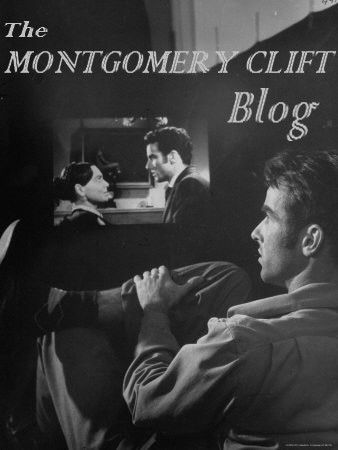







.-+albornoz+(4)+BLOG.jpg)

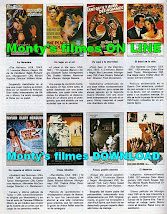
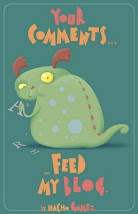

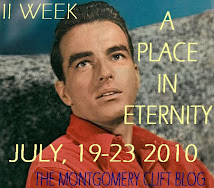





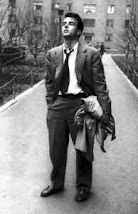




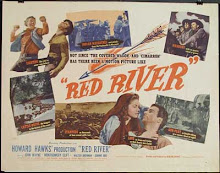
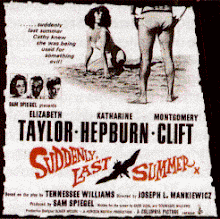



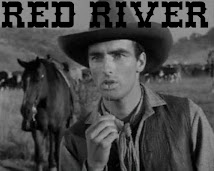


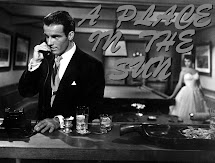2.jpg)
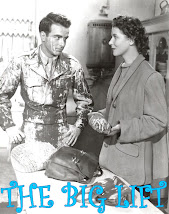.jpg)
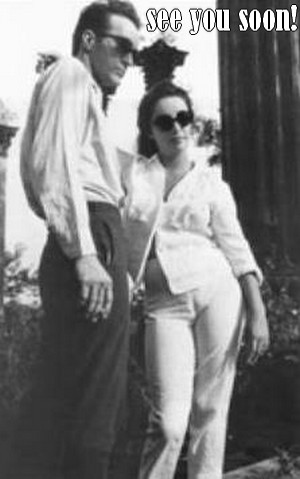

.jpg)

